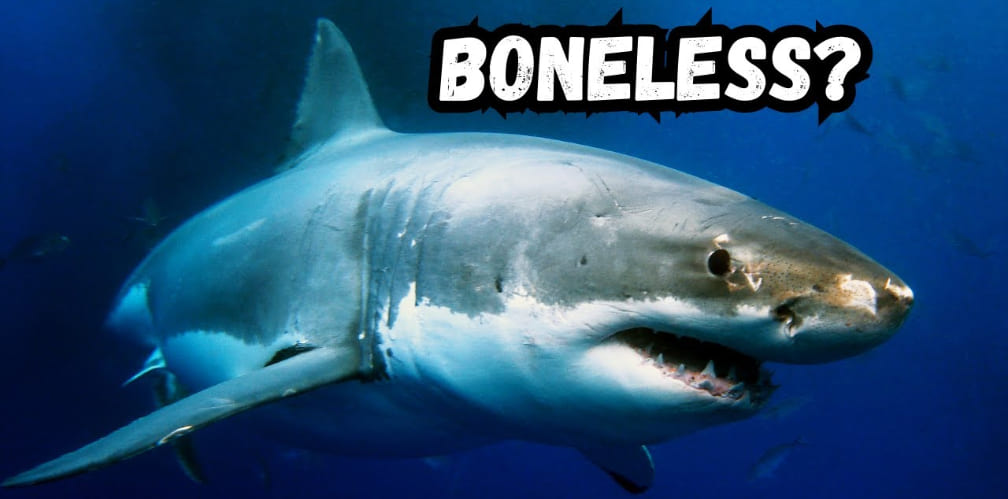The skeletal composition sets Sharks apart from other fish types since they lack normal bones instead using cartilage. Unlike other fish they have cartilage for their skeleton which resembles the flexible material present in human nasal passages and inner ears. Shark cartilage makes these fish very agile and light in water because it acts as a substitute for bone tissue. A shark skeleton normally conducts its body support and movement through hundreds of cartilage components. Because of their perfectly adapted cartilage framework sharks possess excellent strength and efficiency for successful predation without any bone structures.
Sharks do not have bones.
The shark body consists completely of cartilage material. Sharks benefit from cartilage as their skeletal material because it provides both strength and mobility throughout their aquatic movements. The slower breakdown of cartilage material helps sharks maintain their body structures after death compared to bone organisms. Without bones the sharks differ from standard fish species through their separate anatomical characteristics and swimming function.
What Do Sharks Have Instead of Bones
Sharks do not possess bone structures within their body because their entire skeletal framework consists of cartilage. Because cartilage tissue remains softer and more flexible than bone tissue sharks maintain high movement fluidity. Cartilage tissue inside sharks proves to be both lighter than bone tissue and offers better buoyancy properties thus helping sharks remain afloat while saving swimming energy. Cartilage in shark bodies allows them to turn swiftly and evade predators while still reaching prey through its flexible structure. Sharks utilize their distinct skeletal structure to achieve their exceptional swimming agility and fast speed throughout the water.
Do Sharks Have Tongues
Although sharks possess the organ called a basihyal which functions as their tongue their organ differs completely from the human tongue. Sharks possess a tongue known in scientific terms as a “basihyal.” Inside the shark’s mouth exists a small dense piece of cartilage called the basihyal. Contrary to the human tongue the basihyal stands as a small cartilaginous structure with poor movement abilities. The majority of shark species do not utilize their tongues to taste or handle food items. Food transportation through the throat finds assistance from the basihyal structure. During feeding behavior the cookiecutter shark among others makes active use of its basihyal.
All about teeth
Shark teeth are formed by enamel-coated dentin instead of using bone structures. Dentin functions as a hard tissue structure that creates shark teeth extremely powerful along with highly wear resistant. Some shark teeth can be discovered in good condition due to their dentin composition. During their existence, sharks naturally lose and regenerate several thousand teeth throughout their life cycle. Each shark species creates teeth with distinctive structures suitable for tearing flesh or crushing the carapace.
Shark Skeleton
Shark teeth consist of dentin material coated with enamel instead of using bone structures. Dentin functions as a hard tissue structure that creates shark teeth extremely powerful along with highly resistant to wear. Some shark teeth can be discovered in good condition because of their dentin composition. During their existence sharks naturally lose and regenerate multiple thousand teeth through their life cycle. Each shark species creates teeth with distinctive structures suitable for either flesh tearing or shell crushing purposes.
The jaw
The jaw structure in sharks does not contain bone elements. The shark jaw consists only of cartilage tissue. The shark jaw contains strong flexible cartilage which enables it to deliver powerful bites because of its structure. Shark cartilage obtains increased strength in their jaws through mineral deposits of calcium making them harder. The adaptation plays a critical role in feeding behavior because numerous sharks need their jaws to penetrate tough outer layers of their prey. Their jaw configuration gives them a large biting opening followed by rapid strong clamps.
The flexible cartilage skeleton allows sharks to make quick, agile movements.
Cartilage structures make up the entire skeleton structure of sharks instead of bones.
The teeth inside sharks originate from dentin material which receives an enamel layer on top instead of using bone.
To control buoyancy sharks rely on their cartilage-based skeletal structure plus the oil concentrations present in their livers.
The tongue structure of sharks known as basihyals functions unlike typical human tongues since it demonstrates less flexibility and lacks tasting capabilities.
Similar to sharks in general the skeleton structure of whale sharks consist of cartilage.
The jaws of sharks consist of flexible cartilage tissues with incorporated calcium minerals.
Shark teeth are relatively better at fossilization due to their hardened material composition although such occurrences happen infrequently.
The exceptional durability of shark teeth results from their dentin foundation covered with enamel material.
Sharks possess the remarkable ability to progressively shed and regenerate fresh teeth throughout their entire existence.





